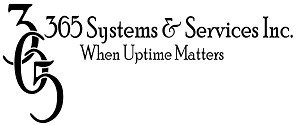 By now, most people have seen, or at least heard of, QR codes. They’re on everything from product packaging to business cards. But what are they, exactly?
By now, most people have seen, or at least heard of, QR codes. They’re on everything from product packaging to business cards. But what are they, exactly?
QR stands for Quick Response. It is a type of barcode that can be scanned easily and rapidly by imaging technology, such as that found in smartphones. QR codes really picked up when smartphones became mainstream, as people were suddenly able to read a QR code at any time with their phones.
Anyone with a smartphone can download a free QR reading application, and they can begin to scan QR codes at their leisure.
What Do QR Codes Do?
What happens when a QR code is scanned?
A QR code is programmed to open a link. Therefore, web-enabled devices can be driven to a wide variety of different types of content, or the QR code can be set to perform a certain function. They link the physical and the digital in a new way, allowing people to access relevant digital information, resources, deals, and promotions on the fly.
QR codes can link to things like:
- Installation instructions
- Nutrition information
- Driving directions
- Videos
- Online forms or applications
- Free downloads
- Customer surveys
- Product tracking
- Social media pages (e.g. to a “Like” button)
- Much more!
QR codes are becoming more popular as they become increasingly sophisticated and useful. These numbers are growing as consumers begin to pick up on the trend.
QR codes are also great marketing tools, because they can drive prospects to relevant information and promotional material, and they provide measureable results.
QR Code Best Practices for Business
1. Test the Code
After creating a QR code, test it on multiple devices and with multiple browsers to ensure that it works properly on all of them. Physically testing the code, rather than using an online tool to test it, yields more reliable results.
2. Optimize Landing Pages for Mobile
People will only be accessing the QR code via their mobile devices. Ensure that the digital content they are being driven to is specifically intended to be viewed on mobile browsers. It is a huge missed opportunity if potential customers are scanning your QR codes only to be sent to messy pages with tiny text that were meant for desktop screens. Make sure users can easily navigate once they’ve arrived.
3. Offer Real Value
QR Codes must link to something that provides people with something valuable. Whether that is the right piece of information at the right time (e.g. nutritional information), or a special coupon, it is important to incentivize people to scan the code. People will not go out of their way to pull out their phone and scan a QR code unless they perceive it as being worthwhile. A clear call to action that explains the benefit of scanning the QR code is highly effective.
Some QR codes offer exclusive access, time-sensitive content, deals, free downloads, coupons, “Instant Win” contests, or “secret” information to encourage people to scan.
So go ahead and try integrating a QR code into your company’s marketing strategy. They’re an inexpensive and quickly growing method for reaching interested prospects.
